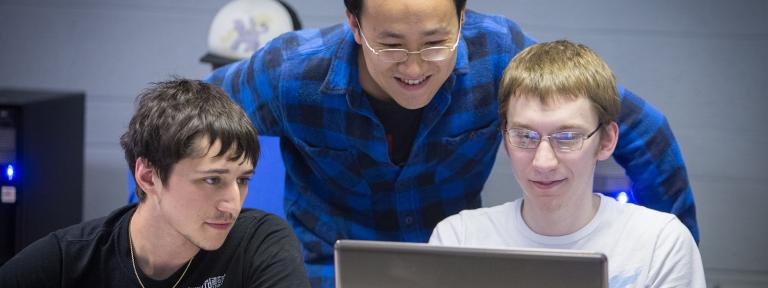
“We have a high speed network course, and after we deploy the equipment, we’ll be able to incorporate it into that course as well as others.”
Kettering University’s most recent Major Research Instrumentation (MRI) grant from the National Science Foundation (NSF) will, once installed, give Kettering something no other university in the country has -- its own 4G long term evolution (LTE) wireless system.
The equipment, made possible through the MRI grant worth $143,920, will take approximately one year to be installed, but once it is operational, it will have a wide range of research, academic and even community uses -- including assisting law enforcement.
“An example of what we might be able to do with this equipment is develop a real-time wireless video surveillance network for our campus safety or eventually even Flint police,” said Dr. Yunsheng Wang, assistant professor of Computer Science at Kettering University and the principal investigator of the NSF grant. “So we would be able to have a high definition camera attached to a law enforcement vehicle that would capture footage as it travels that would be able to be monitored by uploading to Kettering’s security system in real-time.”
Wang said plans are to implement one or two 4G LTE stations. Depending on where they are located, there is even potential for the video capabilities of the systems to help city of Flint law enforcement with monitoring and crime prevention in some areas.
The grant is the sixth MRI grant Kettering has received from the NSF since 2012 -- the most of any university in Michigan in that span. Implementing the equipment will provide numerous research opportunities for Kettering faculty and students, including using a video surveillance network to evaluate delay tolerant-based content sharing systems, utilize localization and tracking using sensor data, robotics, virtual reality and enhancing health monitoring.
The instrument also opens up opportunities for research across disciplines -- co-investigators included faculty from Electrical and Computer Engineering as well as Computer Science. The technology will also be used in the classroom.
“We have a high speed network course, and after we deploy the equipment, we’ll be able to incorporate it into that course as well as others,” Wang said.
Once implemented, the system will have approximately a one-mile range. Goals for research include training undergraduate and master’s students in wireless networks research, developing hands-on lab-based course modules and engaging in community outreach efforts. Other uses for the technology include free data use within the range of the system, mobile robotics communication and using latest mobile handsets for mobile application development.
“This equipment will open up new research and education opportunities for Kettering students and faculty,” Wang said. “It will help give the entire University the ability to provide even more undergraduate research opportunities.”